Connecting Indian cosmology, Western psychology and AI, Jan Krikke (original) (raw)
TRANSLATE THIS ARTICLE
Integral World: Exploring Theories of Everything
An independent forum for a critical discussion of the integral philosophy of Ken Wilber
 Jan Krikke is a former Japan correspondent for various media and former managing editor of Asia 2000 in Hong Kong. He pioneered the study of axonometry, the Chinese equivalent of European linear perspective overlooked by Jean Gebser. He is the author of several books, including Leibniz, Einstein, and China, and the editor of The Spiritual Imperative, a macrohistory based on the Indian Varna system by feminist futurist Larry Taub.
Jan Krikke is a former Japan correspondent for various media and former managing editor of Asia 2000 in Hong Kong. He pioneered the study of axonometry, the Chinese equivalent of European linear perspective overlooked by Jean Gebser. He is the author of several books, including Leibniz, Einstein, and China, and the editor of The Spiritual Imperative, a macrohistory based on the Indian Varna system by feminist futurist Larry Taub.
Reposted from Asia Times, March 27, 2024, with permission of the author
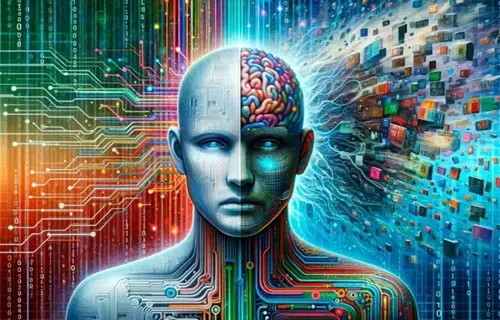
Jan Krikke
AI's post-work era will have major economic, social and psychological upshots, helping humanity get the right answers to the right questions
“Everything that humans are doing now—gathering, analyzing and processing data—will be done by AI. Ten years from now, consciousness (chitta) will be valued over knowledge. This is the time human beings can focus on consciousness.” –Indian spiritual teacher Sadhguru
For well over a century, the Indian worldview and Vedic-inspired spirituality have captivated the West. The pioneers of quantum physics were fascinated by Indian cosmology and in recent decades millions of people embraced Indian spiritual practices like yoga and meditation.
Indian spirituality played a key role in the development of New Age and the stage development theory of Ken Wilber, a synthesis of Indian thought and Western psychology. The higher mental stages in Wilber's development model rely on Indian concepts and Sanskrit terminology.
Curiously, much of the literature on the Indian role in the consciousness-raising practices developed in the West omit the Vedic concept of mind, Antahkarana (the four distinct parts of the mind), and Chidākāśa, translated as “conscious space” or “consciousness field.”
Chidākāśa is a compound term that includes the notion of Akasha, the intangible and invisible substrate of the cosmos, comparable to the Western notion of the ether. The quantum physics community insists that Einstein's Relativity Theory explained away the ether. The Indian sages would argue that Akasha is the medium that gives access to ultimate reality.
Antahkarana can also shed light on the development of artificial intelligence. As we shall see, AI systems perform only two of the four parts of Antahkarana. It explains why AI can not be conscious and can only simulate consciousness.
Antahkarana
Some 3,000 years ago, Indian (Vedic) sages created the first “map” of the human mind. They identified four distinct parts of the mind: ego, intellect, mind and memory, and called it Antahkarana.
Several early civilizations made attempts to explain the human mind. Sumerian beliefs about the human psyche were intertwined with religious cosmologies. They attributed mental phenomena to the influence of gods and spirits.
Egyptians used the notion of the “ka” (spirit) and the “ba” (personality) to understand the human psyche. In Greece, Aristotle pondered the nature of the mind, knowledge and perception. His work played an important role in later Western inquiries into psychology.
The Indian notion of Antahkarana stands out as the first internally consistent map of the human mind. It attributes specific roles to the four different functions it identified.
- Manas (Mind)—the lower, rational part of the mind that connects with the external world, the seat of desire and the governor of sensory and motor organs.
- Ahamkara (Ego)—identifies the self (Atman, or soul) with the body as “I”. The ego can drive accomplishments but can also fuel pride, jealousy and hate.
- Buddhi (Intellect)—the decision-making part of the mind able to discern the world logically.
- Chitta (Memory)—the part that stores impressions, memories and experiences, and the gateway to Chidākāśa, or pure awareness.
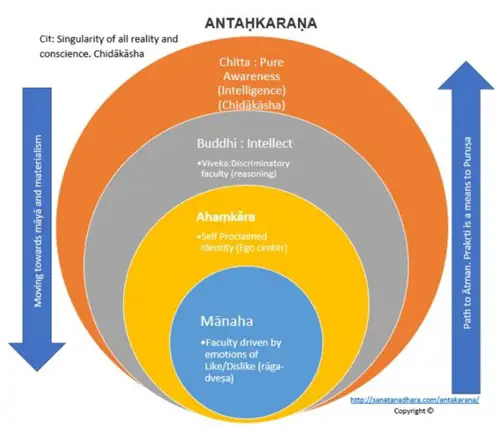
Fig. 1—One of various interpretations of Antahkarana
Chitta deals with remembering and forgetting (comparable to random access memory or RAM in computers). It is shaped by our upbringing, environment and education, and accounts for social and cultural differences between people and cultures.
By transcending ego and memory, we become aware of _Chidākāśa_—“conscious space” or “consciousness field” in which all experiences unfold. The term Chidākāśa is derived from two Sanskrit words: Chit, which means consciousness or awareness; and Akasha, which refers to space or ether. More on Chidākāśa below.
Cosmic integration
In the late 19th century, Indian cosmology, religion, and notions of consciousness spread to the West, initially through Theosophy, the first synthetic religion. Its founder, Madam Helena Blavatsky, proposed the integration of Asian and Western philosophical-religious thought to create a “grand religious synthesis.”
Madam Blavatsky discussed Antahkarana in her writing. In her book “The Voice of the Silence” (1889) she wrote: “Antaskarana [sic] is the lower Manas, the Path of communication or communion between the personality and the higher Manas or human Soul. At death, it is destroyed as a Path or medium of communication, and its remains survive in a form as the Kamarupa—the 'shell.'”
In the 1920s, the Indian worldview drew the attention of the pioneers of quantum physics, among them Albert Einstein, Niels Bohr and Erwin Schrödinger. They noticed that Indian cosmology anticipated the findings of quantum physics, including the idea that observer and observed partake of the realm and can't be separated.
In the Vedic classic Upanishads, Brahman is the universal self or the ultimate singular reality. The Atman is the individual's inner self, what some would call the soul. A central tenet of the Upanishads is tat tvam asi, which means the Brahman and the Atman are identical—as in: “You are the universe.”
Indian thought played a key role in the birth of the hippy movement of the 1960s and the New Age era that emerged in the 1970s. A key figure in the latter was the American philosopher Ken Wilber, who would become the leading figure in the Integral Movement. Wilber integrated Eastern, especially Indian, spirituality with Western psychology developed by Sigmund Freud, Carl Jung and others.
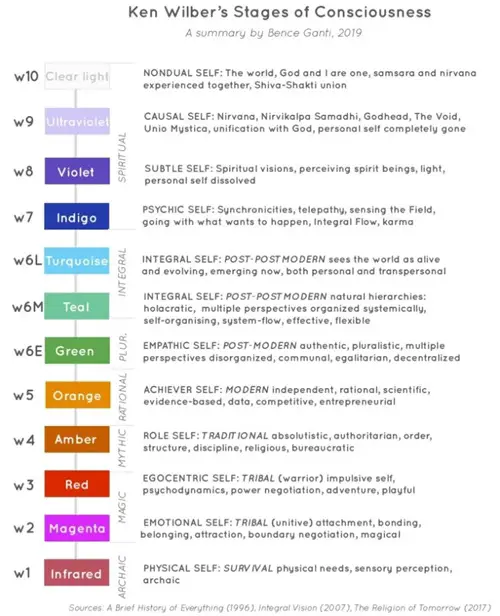
Fig 2.—One of various interpretations of Ken Wilber's Integral stage model
In 1977, at the age of 28, Wilber published his landmark book, “The Spectrum of Consciousness.” In the opening chapter, Wilber compared consciousness with the electromagnetic spectrum. He pointed out that electromagnetic radiation is a spectrum of energy waves of various wavelengths, frequencies and energies. He writes:
“If, for the moment, we do consider consciousness as a spectrum, then we might expect that the different investigators of consciousness, especially those commonly termed 'Eastern' and 'Western', because they are using different instruments of language, methodology, and logic, would 'plug in' at different bands or vibratory levels of the spectrum of consciousness, just as the early radiation scientists plugged in at different bands of the electromagnetic spectrum.”
The Spectrum of Consciousness was the launching path for Wilber's influential Integral Theory, which is typically defined as “a comprehensive framework that seeks to integrate multiple perspectives and disciplines to understand complex phenomena by considering the interrelations and interactions between individual, collective, and cultural dimensions.”
Wilber impressed upon his readers that spirituality and psychology can overlap and enrich each other, but they are distinct and confusing them can be counterproductive. He wittingly notes: “My dear Sir, you suffer from basic metaphysical anxiety because you don't realize that you are fundamentally one with God.”
Enter AI
Antahkarana and AI may seem like strange bedfellows but they can shed light on what is arguably a turning point in human history. AI will gradually relieve humans of routine and repetitive mental labor. Any human task that can be captured in mathematical form can be executed by AI. Given time, AI will change our view of work forever.
Let's first note that AI is a misnomer for what it factually is: a Boolean logic system. AI is based on its immediate predecessor, cybernetics, the first comprehensive theory for binary (as opposed to analog) computing developed in the 1940s.
Both cybernetics and AI use Boolean classes and binary logic: true/false, yes/no, if/then, etc. Moreover, they both rely on the concept of feedback: If X happens, then do Y or Z, or Y and Z.
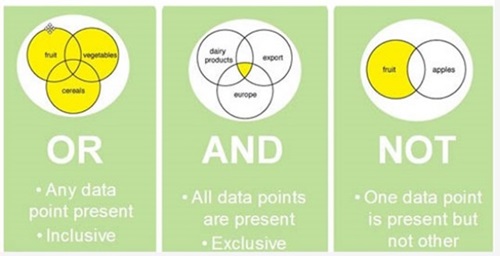
Fig. 3—Boolean classes and three of it operators
A textbook example of a cybernetic system is the autopilot in an airliner. The autopilot steers the aircraft from A to B within the parameters set by the crew of the aircraft.
The autopilot constantly checks the actual position of the aircraft against its flight plan and will act if it detects discrepancies. If the airliner deviates from its programmed flight path due to strong side winds, the autopilot may initiate a course correction. If it encounters strong headwinds, the autopilot may rev up the engines to stay on schedule.
The Cybernetics method consists of three steps: Plan, Quantify, Steer. Plan defines the goal or destination; Quantify defines the required resources to execute the Plan; and Steer uses the feedback system to ensure that the system stays on course to its destination.
Artificial intelligence differs from Cybernetics in that it can be programmed to learn from its mistakes. Among others, it can be designed to make on-the-fly adjustments in real time to improve its performance.
An AI system consists of an algorithm (computation function) that has access to databases (memory). All AI systems are designed for a specific task or function, be it playing chess, navigating a vehicle, analyzing a medical X-ray, or answering general questions (the latter being large language models like ChatGPT).
AI systems use two of the four parts of _Antahkarana_—intellect and memory. It needs intellect for computation and it needs (access to) “memories”—i.e. databases. The other two parts, ego and mind, are the domain of the designers of the system.
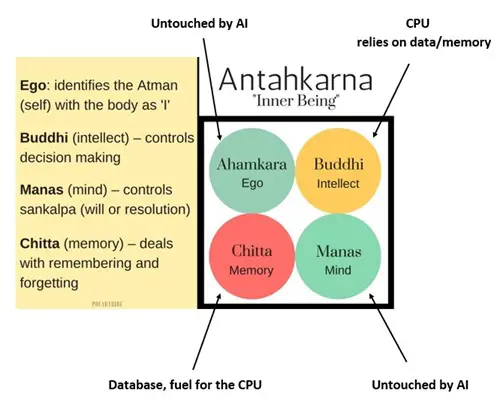
Fig. 4—AI can take over two of the four faculties of Antahkarana
AI experts are prone to hyperbole but they are right when they claim that AI will gradually outperform humans in most work that only requires routine or repetitive mental labor. AI will gradually make white-collar jobs redundant and force society to reimagine itself.
Toward Chidākāśa
We saw above that Chidākāśa refers to the “conscious space” or “consciousness field” within which all experiences occur, and that Chidākāśa is a compound word that combines two Sanskrit words: Chit, meaning consciousness or awareness, and Akasha, which refers to space or ether.
Akasha is crucial to understanding Chidākāśa. The closest Western equivalent is the ether. The Chinese speak of qi (ch'i). In the West, speculation about the ether dates back to Aristotle and was continued by Newton and James Clerk Maxwell.
In 1861, Maxwell proposed a unified theory of electricity, magnetism and optics by appealing to the mechanical conception of an electromagnetic ether. Up to the early 20th century, scientists assumed radio waves traveled through the ether.
In the late 19th century, attempts to detect the ether with scientific instruments failed and the acceptance of Einstein's Relativity Theory in the early 20th century virtually ended the debate about the ether. After the 1920s, the quantum physics community virtually banned discussions about the ether from the scientific discourse.
One of the few scientists to resist the group-think scientism about the ether and Einstein's Relativity Theory was Nikola Tesla, who developed his own unique ether theory in the late 19th century. Tesla questioned the notion of “curved space” that was implied by Einstein's Relativity Theory.
“I hold that space cannot be curved, for the simple reason that it can have no properties,” he wrote. “It might as well be said that God has properties. He has not, but only attributes, and these are of our own making.”
Notably, Einstein was sympathetic to Tesla's argument. In a lecture he gave in Leiden, in 1919, he pointed out that Relativity doesn't require the ether, but it doesn't preclude its existence. “To deny the ether is ultimately to assume that empty space has no physical qualities whatsoever,” Einstein said.
Tesla was convinced that the quantum physics community, by abandoning the ether, threw out the baby with the bathwater. Like the ancients, he considered the ether as the substrate of all existence.
In his article, “Man's Greatest Achievement,” written in 1930, Tesla summarized his contrarian views for posterity. Remarkably, he referred to Indian cosmology to make his point.
“All perceptible matter comes from a primary substance, or tenuity beyond conception, filling all space, the akasha or luminiferous ether, which is acted upon by the life-giving Prana or creative force, calling into existence, in never-ending cycles all things and phenomena.”
Sadhguru
Our story comes full circle with Indian yogi Jaggi Vasudev Sadhguru, one of the most influential spiritual teachers in the world today. Sadhguru, founder of the globally active Isha Foundation, is a frequent speaker at conferences on AI, neurology and psychology. Videos of his talks on social media have been viewed over a billion times.
In his talks, Sadhguru frequently points out that AI represents a turning point for humanity. He explains that most work done today is based on knowledge we acquire through education and experience and enables us to be accountants, doctors, or engineers. This database of knowledge, stored in our memory, is at risk of gradually being devalued.
Sadhguru says: “In the 21st century, AI will take away the power of our professional knowledge, just like power tools took away the power of our muscles in the 20th century. Everything that humans are doing now—gathering, analyzing, and processing data—will be done by AI. Ten years from now, consciousness (chitta) will be valued over knowledge. This is the time human beings can focus on consciousness.”
Sadhguru's timeframe of ten years may be off by a few years, but we can be certain that the AI-driven, post-work era will have major economic, social and psychological implications. AI will not only help us to get the right answers, it can also help us to ask the right questions.
Will Artificial Intelligence Take Away Our Jobs?, Sadhguru, 16 okt 2018.